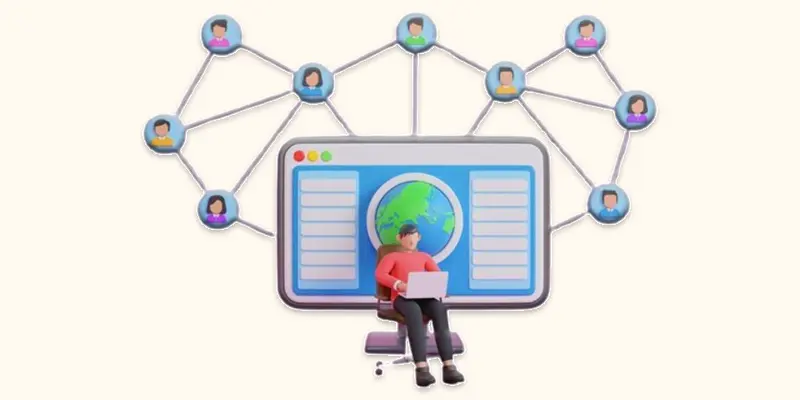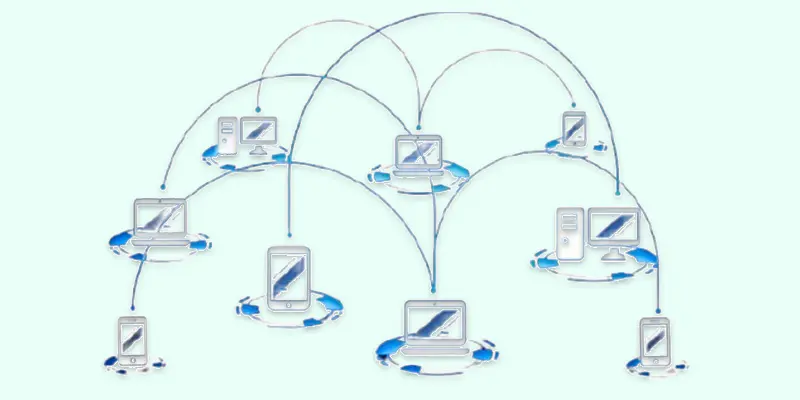What Is Network Node Manager? Features, Tools and How It Works
Published: 17 Apr 2025
Network Node Manager
Have you ever wondered how big computer networks stay organized and problem-free? That’s where a network node manager comes in! It helps keep track of all the devices in a network, like computers, routers, and servers. It also makes sure everything is working smoothly and alerts you if something goes wrong. In this post, we’ll explore what a network node manager does and why it’s super useful.
What is a Network Node?
A network node is any device that connects to a network. This can be a computer, printer, router, mobile phone, or even a server. If it can send or receive data over a network, it’s called a node. Example: Think about your home Wi-Fi. Your phone, laptop, and smart TV are all nodes because they connect to the internet and talk to each other through the router.

What Does a Network Node Manager Do?
A network node manager helps you watch over all the devices (or nodes) in a network. These can be things like computers, printers, routers, or servers.
- Finds Devices: It scans the network and finds all connected devices.
- Checks Health: It checks if devices are working properly or have issues.
- Sends Alerts: If something goes wrong, it sends a warning or alert right away.
- Tracks Performance: It keeps an eye on how fast or slow each device is working.
- Gives Reports: It creates reports to help you understand your network better.
Key Features of a Network Node Manager
A Network Node Manager offers several powerful features that help you monitor, manage, and troubleshoot your network. These features work together to keep your devices running smoothly and catch problems early.
Device Discovery
The device discovery feature scans your network to find all connected devices, ensuring you always know what’s on your network. Think of it like checking your Wi-Fi to see all the devices connected to it, like your phone, laptop, or smart TV.
Health Monitoring
Health monitoring constantly checks the status of devices on your network to make sure they are working properly. It’s like a doctor regularly checking your heart to make sure it’s healthy and catching any early signs of trouble.
Alert Notifications
If something goes wrong, the node manager sends alerts so you can quickly address any issues before they escalate. Imagine getting a text notification when your phone’s battery is about to run out, so you can plug it in.
Performance Monitoring
Performance monitoring tracks the speed and efficiency of your devices, helping you spot any slowdowns or issues. It’s like checking the speed of your internet when a website won’t load, so you can figure out if it’s your connection or something else.
Reporting and Logs
The node manager keeps a log of all activities and events in your network, so you can review them later for troubleshooting or planning. Just like reading through a report card to see your progress, these logs help you track your network’s performance over time.
Why Is a Network Node Manager Important?
A Network Node Manager plays a vital role in keeping your network running smoothly. It helps monitor, troubleshoot, and optimize the devices connected to your network. Without it, managing a large network can become difficult, time-consuming, and full of potential problems.
Prevents Network Downtime
A network node manager constantly monitors the health of devices, catching problems early. This helps prevent unexpected downtimes, which can cost businesses time and money. Imagine a printer stops working in an office. The node manager can alert the IT team, who can fix the problem before it affects productivity.
Keeps Things Organized
With many devices connected to a network, it can get chaotic. A node manager helps keep track of all the devices on the network, making it easy to find and manage them. It’s like keeping a list of all your devices at home—computers, phones, and printers—so you know who is connected to your Wi-Fi.
Improves Network Security
By continuously checking device activity, the node manager can spot any suspicious or unusual behaviour. This helps protect against cyber threats and unauthorized access. If an unknown device tries to connect to the network, the node manager will alert you, helping prevent a potential security breach.
Helps with Performance Optimization
A network node manager tracks how well devices are performing. If something is slowing down, you can address the issue before it impacts the whole network. It’s like checking your car’s performance before a long trip to make sure everything is running smoothly.
Saves Time and Effort
Instead of manually checking each device, the node manager automates the process. It saves IT teams from wasting time and allows them to focus on more critical tasks. It’s like having a smart assistant who automatically takes care of routine tasks, so you don’t have to do everything yourself.

Popular Network Node Manager Tools
There are many network node manager tools available, each offering unique features to monitor and manage your network devices.
SolarWinds Network Performance Monitor
- What It Does: It monitors network devices, including routers, switches, and servers, and alerts you if there’s a problem.
- Why It’s Popular: Known for its easy-to-use interface and detailed performance monitoring. It also offers real-time alerts and reports to help you act fast.
- Example: Think of it as a dashboard that shows you all the devices in your network and lets you know when something goes wrong.
PRTG Network Monitor
- What It Does: PRTG monitors devices, traffic, and performance on your network. It checks all devices for uptime, bandwidth, and overall health.
- Why It’s Popular: Offers customizable alerts and a user-friendly interface. It supports various monitoring protocols and can monitor large networks.
- Example: It’s like having a network detective that checks all devices and reports when something’s off.
Nagios XI
- What It Does: Nagios provides comprehensive network monitoring and can monitor everything from devices to applications and services.
- Why It’s Popular: Offers flexibility and scalability for large networks. It can be customized with plugins to meet specific needs.
- Example: It’s like a custom-made tool for your network that keeps track of everything, no matter the size.
ManageEngine OpManager
- What It Does: OpManager offers real-time monitoring and visual dashboards to track devices and their health.
- Why It’s Popular: Its intuitive interface and powerful reporting features make it great for small to medium-sized businesses.
- Example: It’s like having a control center where you can see the status of all your devices and quickly fix any issues.
Zabbix
- What It Does: Zabbix is an open-source monitoring tool that helps track network devices and applications. It provides detailed performance metrics and customized alerts.
- Why It’s Popular: It’s cost-effective, customizable, and supports large-scale networks.
- Example: It’s like a smart network assistant that sends you alerts and keeps everything under control.
How Does a Network Node Manager Work?
A Network Node Manager follows a simple process to monitor and manage devices in a network.
Device Discovery
- What Happens: The network node manager scans the entire network to find all the connected devices (nodes). This includes computers, printers, routers, and other network devices.
- How It Helps: You get a complete list of all devices, and it automatically keeps track of any new devices that join the network.
Example: Like when you connect a new phone to your Wi-Fi, the manager detects and adds it to the list.
Health Monitoring
- What Happens: Once all the devices are discovered, the manager continuously monitors their health. It checks if devices are online, functioning well, and performing optimally.
- How It Helps: It helps identify any issues (like slow performance or offline devices) so you can fix them before they affect the network.
Example: It’s like checking the status of your car’s engine—ensuring it runs well before it breaks down.
Alert Notifications
- What Happens: If the node manager detects any problems, like a device going offline or performance dropping, it sends out alerts to the network administrator (or IT team).
- How It Helps: This lets the team quickly address issues and avoid network downtime.
Example: It’s like getting a phone notification if your Wi-Fi stops working, so you can fix it right away.
Performance Monitoring
- What Happens: The manager tracks the performance of devices, measuring things like network speed, bandwidth usage, and data traffic.
- How It Helps: It helps detect slowdowns or network congestion, so you can improve performance or fix bottlenecks.
Example: Like checking how much data you’re using on your mobile plan to avoid running out of speed.
Reporting and Logs
- What Happens: The manager keeps detailed logs and reports about device activities, performance history, and alerts.
- How It Helps: These reports provide insights into network trends, helping plan upgrades or detect recurring problems.
Example: Like checking your monthly phone bill to see how much data you used, helping you manage your usage better.
When Should You Use a Network Node Manager?
A Network Node Manager is an essential tool for managing and monitoring your network, but it’s especially useful in certain situations.
When You Have a Large Network
- Why It’s Needed: If your network includes many devices (computers, printers, routers, etc.), it can become difficult to track and manage them all manually.
- How It Helps: The node manager automatically detects all devices and keeps track of their health, performance, and status, making it easier to manage large networks.
Example: If you’re managing a business network with dozens of computers and devices, a node manager can keep everything organized and monitored.
When You Need to Ensure Network Uptime
- Why It’s Needed: If your network is critical for business or daily operations, downtime can be costly and disruptive.
- How It Helps: The node manager alerts you to any device issues or network problems early, so you can fix them before they cause major disruptions.
Example: If you’re running an online store, network downtime could mean lost sales. The node manager ensures everything stays online and functioning.
When You Need to Monitor Performance
- Why It’s Needed: If your network’s performance is slow or unreliable, you need a tool to monitor and improve it.
- How It Helps: A node manager tracks bandwidth usage, device performance, and network health, helping you optimize and fix issues before they affect the users.
Example: If your office Wi-Fi is slow, a node manager can help identify which devices are using too much bandwidth and causing delays.
When You Want to Improve Security
- Why It’s Needed: A secure network is critical to protect sensitive data and prevent unauthorised access.
- How It Helps: The node manager can alert you to suspicious activity, unauthorized devices, or potential security risks on your network.
Example: If a hacker tries to connect to your network, the manager can send you an alert so you can take action immediately.
When You Need Detailed Reports and Logs
- Why It’s Needed: Tracking network activity and troubleshooting issues is much easier with access to logs and reports.
- How It Helps: The node manager keeps detailed records of network events, which you can refer to when solving problems or improving performance.
Example: If a device has been acting up for weeks, you can check the logs to see what’s been happening and why it’s malfunctioning.

Conclusion About Node Managers
A Network Node Manager is an essential tool for maintaining a healthy, efficient, and secure network. It helps monitor devices, improve performance, and quickly detect issues, ensuring your network runs smoothly. Whether you’re managing a small office or a large enterprise network, a node manager can save time, reduce downtime, and enhance security.
FAQS – What is a Network Manager
NNM stands for Network Node Manager, a tool used to monitor and manage devices on a network. It helps track the health and performance of devices, like routers and switches. NNM sends alerts if something goes wrong, ensuring the network runs smoothly.
Experience, geography, and business size can all affect a network manager’s pay. In the United States, it typically falls between $60,000 and $100,000 annually. The salary can increase with more experience or specialized certifications.
NetworkManager is used to manage and configure network connections. It automates the process of connecting to Wi-Fi, Ethernet, and VPNS, making networking easier for users. It ensures devices stay connected to the best network with minimal effort.
The purpose of network management is to ensure a network is running smoothly, securely, and efficiently. It involves monitoring devices, troubleshooting issues, and optimizing performance. Good network management helps prevent downtime and improves overall reliability.
NetworkManager is not strictly required, but it makes network management easier and more efficient. It automates tasks like connecting to networks and managing configurations. It’s especially helpful for users who need to manage multiple network connections.
A Wi-Fi NetworkManager is a tool or software used to manage Wi-Fi connections on a device. It automatically connects to available networks and helps configure settings. It ensures a device stays connected to the best possible Wi-Fi network with minimal effort.

- Be Respectful
- Stay Relevant
- Stay Positive
- True Feedback
- Encourage Discussion
- Avoid Spamming
- No Fake News
- Don't Copy-Paste
- No Personal Attacks

- Be Respectful
- Stay Relevant
- Stay Positive
- True Feedback
- Encourage Discussion
- Avoid Spamming
- No Fake News
- Don't Copy-Paste
- No Personal Attacks





